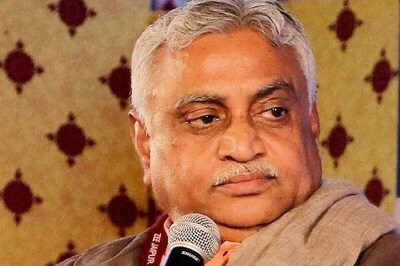
views
Barcelona: Sony Corp. declared a return to the smartphone business on Sunday, unveiling its first smartphones under the Sony brand, but warned the group's painful transition would not be as fast as rebranding.
Kazuo Hirai is due to formally take over as Sony CEO on April 1, replacing Howard Stringer. Hirai said that while some management changes had already been identified there was still a long way to go to "explain to everybody who's doing what."
"People have these lofty expectations that we're going to have all the answers to all the problems that plague the world on April 1," Hirai said in an interview at the Barcelona Mobile World Congress. "We're not going to have that."
The once-stellar consumer electronics brand is heading for what it has warned would be a much bigger-than-expected $2.9 billion annual loss, its fourth in a row.
The surge of red ink has put Hirai under intense pressure from investors and ratings agencies to quickly staunch losses at the sprawling electronics group.
Hirai was at the Barcelona Mobile World Congress to unveil two new Android-powered smartphones, Xperia P and Xperia U, carrying the Sony brand.
Sony completed the purchase of Ericsson's 50 per cent stake in the Sony Ericsson joint venture on February 16, a deal originally announced last October.
The newly renamed Sony Mobile Communications is headed by Bert Nordberg, Sony Ericsson's chief executive from 2009.
While both Hirai and Nordberg stressed that their message to Barcelona was that Sony was back in the phone business, Hirai said that Sony Mobile Communications would be integrated within Sony as a whole.
"Sony Mobile Communications needs to work in lockstep with the rest of Sony Corp. It may be a separate corporate entity but the way in which we operate and work together needs to be transparent and seamless as if it were one organisation," he said.
He pointed to Sony Computer Entertainment Inc, the company responsible for the PlayStation and other gaming products, which remained a separate entity but was fully integrated when it came to discussing products and unifying the experience of users.
"That's the way I envision Sony Mobile Communications working as well," Hirai said.
He said work had already started on making that happen, but did not offer specifics.
Hirai said that he had identified four pillars that Sony would focus on, comprising the core businesses of digital imaging and gaming; marrying mobile devices with other Sony technologies, content and services; turning the struggling TV business around, and identifying new markets such as the medical business.
Both Hirai and Nordberg agreed Sony Ericsson had been hamstrung by having two equal partners, which had slowed down decision-making and getting products to market.
"50:50 was a problem ... I would never take a 50:50 job again," Nordberg told Reuters.
The priority now, Hirai said, was to have a portfolio of products and work with carriers to ensure they "get into the hands of users as quickly as possible."
"It's a very brutal industry and it moves very quickly," Nordberg said. "Every week is a new era in this industry and every competitor announces something, so it's a big, big race going on."



















Comments
0 comment